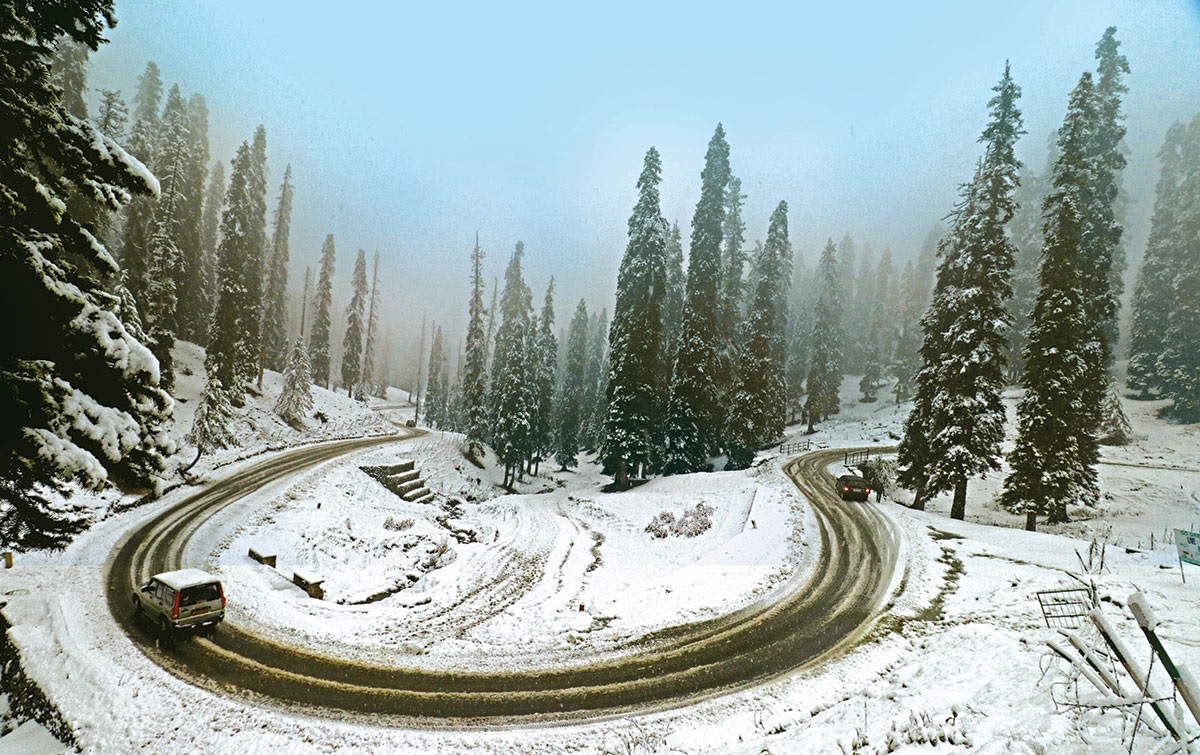Unlike the post-modern tourist spots, Kokernag is one of the places that has had consistent footfalls for more than half of the millennium. It was one of the must-go areas during Kashmir’s Mughal occupation. It continues to be famous for the curative properties of its spring waters, writes Babra Wani
South Kashmir Anantnag, known for its beauty and beautiful landscapes, is home to some of the finest tourist destinations of Kashmir. Be it Pahalgam, Aishmuqam, Achabal or Verinag, the source of the Jhelum River, is gradually evolving into a round-the-year address for visitors. One of the most popular destinations is Kokernag, a very famous getaway from Srinagar. Kokernag’s botanical garden also commonly known as, the ‘pleasure garden’ or ‘rose garden’ is located in the centre of Bringhi Valley.
Kokernag is home to Kashmir’s largest freshwater springs and also a variety of flora and fauna. The botanical garden of Kokernag has flower beds in abundance with a variety of flowers and plants.
The Name
It has a collection of springs, which together form a cluster in the shape of a claw of chicken, hence the name Kokernag. It is an amalgam of two different words, koker and nag, koker in Kashmiri stands for chicken, while nag means springs or snake.

However, in connection to the etymology, there are different versions. “The reason why Kokernag is called Kokernag is because a cock (kokud) has clawed near a place and a spring came out of it and hence its name Kokernag was born,” An elderly resident said. “This is what we have been told by our forefathers.”
Owing to Kashmir’s Hindu past, almost every place has been given a mythical connection. According to this narrative, a saint (Gusawani) came from an unknown location with his bucket. During his repose, some women arrived from the adjacent highly forested areas looking for water, but they were unsuccessful. Finally, they discovered the saint in a deep sleep, his bucket in front of him. The women approached him to quench their thirst with the water in his bucket, but as they opened the bucket’s top, they discovered a snake inside, which fled and slithered over the ground. As soon as it crept, its shape changed into a chicken called Koker in Kashmir. It dug the dirt of the area with its claws and water spilled out of them. That is why it is called Kokernag.
This story runs in conflict with the Kashap Reshi story which envisages a Hindu saint draining water from the little ocean that led to the making of Kashmir, the Vale. The myth, however, survives as part of Kashmir’s superstitious inheritance.
Location
Located en route to Daksum, the pass to Kishtwar Valley, Kokernag’s freshwater springs are known for their digestive powers, a claim residents insist can be proved any day. There are approximately 36 villages in the Kokernag sub-district. These villages are located around the springs.
These springs predominantly lie in the foothills of the Kokernag forests. Even the agricultural fields located in the area are a major tourist attraction.

The forests and the mountains of Kokernag form a cinematic view. The beautiful tourist destination is more famous for its healthy climate than any other factor that can entice a traveller. Many unwell people visit the area each year and stay for an extended period.
There are several hotels, huts and a Dak Bungalow for accommodation purposes in the area for tourists.
Not only non-local tourists, but local tourists from across the Kashmir area also visit the area for excursions and picnics, especially on Sundays and other holidays.
Major Attractions
The famous saint of Kashmir, Sheikh Nooruddin Wali has praised Kokernag saying, “Kokernag Breng Chu Sunsund Preng which means Kokernag is the golden crown of Kashmir.”
The Kokernag Botanical Garden, which has more than one lakh ornamental plants, roses, trees, and plants, is a must-visit and is set up in the foothills of the forests. In the beginning, the garden was originally about 8000 square meters in size but was expanded to over 26,000 square meters in 1969 with new lawns and approximately one lakh decorative plants, trees, shrubs, roses, and flora from the upper ranges’ natural niches.

There is also a separate section of wildflowers and plants in the garden. Small walkover bridges have been constructed on the streams passing through the garden, these walkover bridges are a fan-favourite when it comes to photography. These are the selfie spaces now.
Apart from its natural beauty, Kokernag is also famous for its trout streams. Several pools have been constructed in the area to rear the famous fish. The fish is predominantly sold to the tourists visiting the area by the Fisheries department, which runs a hatchery there. Interestingly, the trout farm of Kokernag is considered the largest of its kind in Asia. The farm is also emerging as the best producer of Rainbow trout fish across the world, located just next to the Botanical garden.
Kokernag expands over an area of some 300 kanals, out of which approximately 129 kanals have been used under the gardens, while the rest of the land is covered under the forest area.
Not A New Spot
Kokernag is not a post-modern tourist spot. It has been a scenic spot for centuries. During the Mughal era, it was a must-go area for the kings, courtiers, queens and concubines.
In the famous Persian language book from the Mughal era, Ain I Akbari by Abul Fazal, the Kokernag waters have been mentioned to be satisfying hunger and thirst both.
Tourists flocking to the area, visit the springs to collect the water there for either consumption or for storing. These springs discharge into different streams, travelling through the area and its surroundings. Even the Mughals believed that the spring waters have curative properties.
A Waterfall
The spring after splitting into multiple streams also forms a waterfall, which is yet another major attraction in the area. The Kokernag Waterfalls are located at an elevation of about 6600 feet above sea level, offering a spectacular view to tourists. The waterfall is situated in the Bringi River Valley, which flows from the glaciers of the Sinthan Mountains.
Water’s wonderful therapeutic qualities have been shown to cure a variety of ailments, as per the locals. The waterfalls have also been praised by historian Abul Fazl, who noted, “A source of water laden with medicinal properties.”
Apart from major tourist attractions, Kokernag is also known for its shrines like Baba Dawood Khaki shrine in Wangam, Baba Dawood Ghohni shrine in the village Ghohon, Syed Amanullah Sahib in village Bidder, in Takiya Magam, Syed Jamaluddin Bukhari in Lisser Muqam, and the shrine of Sheikh ul Alam in Soaf. The Muslim Sufi saints properly known as peer sahabs, of the area have been famous across the valley.
Apart from the Muslim shrines, there are several temples in the area, the most famous of which are located in the villages of Hangalgund and Bidder.
The area was also the home of Hindu writer, broadcaster, political activist and poet Pandit Sarvanand Koul Premi (1924-1990) of Soaf–Shali, Kokernag. His contributions to literature and political movements are acknowledged by people across the board.
Kokernag has played host to various Bollywood crews over the years for shooting sequences and romantic songs.
The main market of the area is another thronged attraction of Kokernag. The people of the area are the cherry on the top because they are known for their hospitality.















